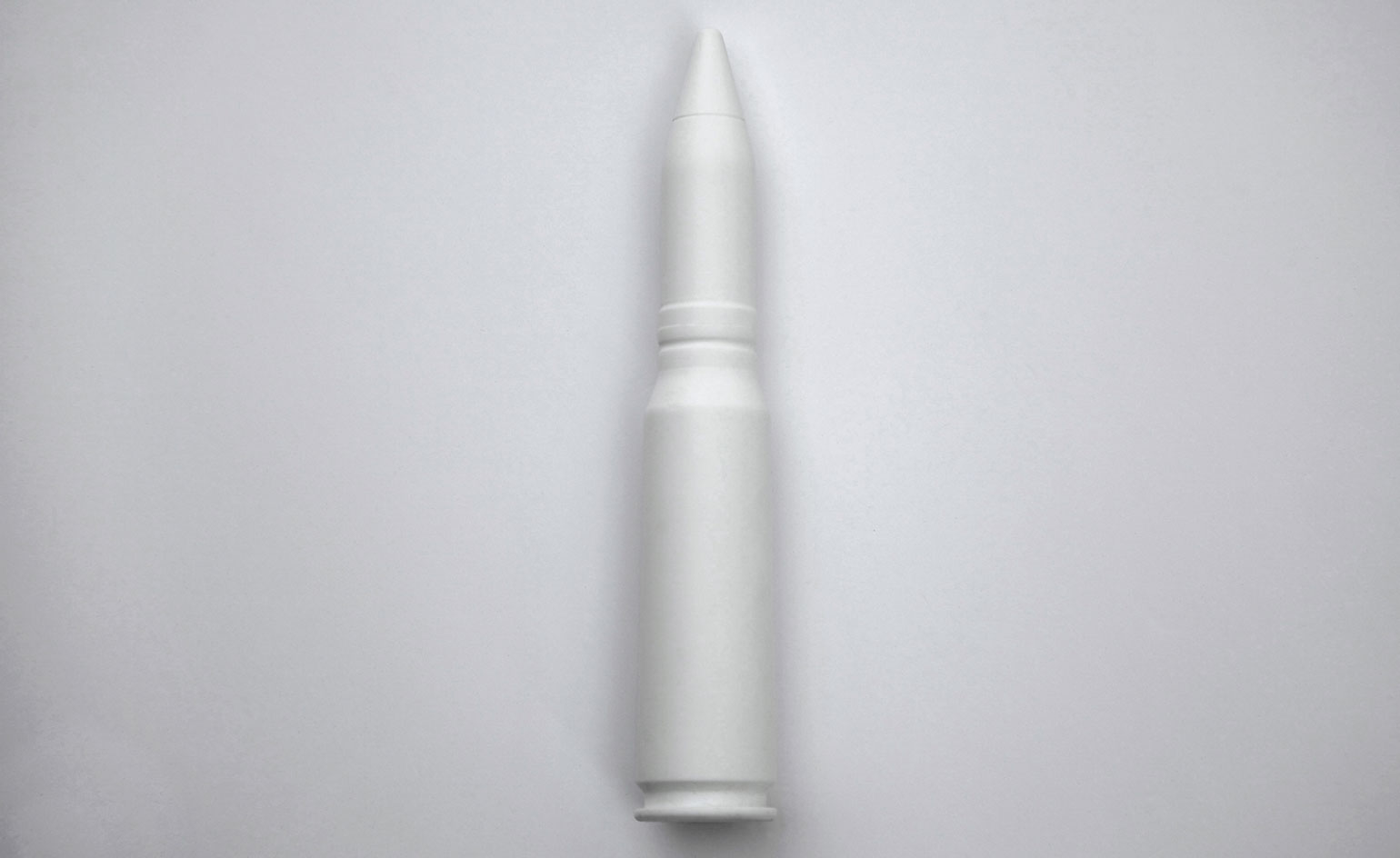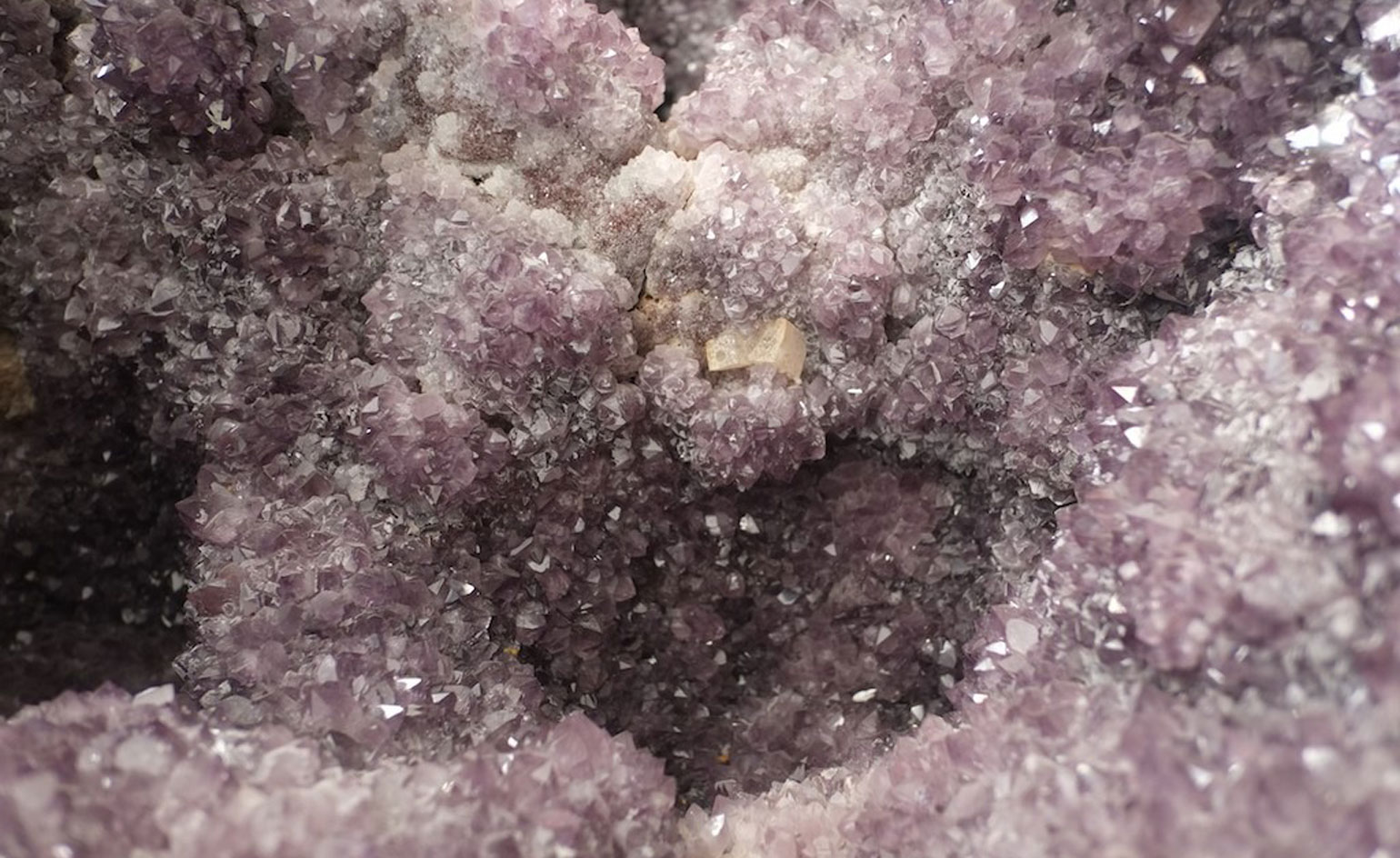Pain paradox: Joanna Rajkowska casts weaponry out of painkillers

During her research into the history of the Cold War, Polish artist Joanna Rajkowska made the dark discovery that Soviet biological weapons were made in conjunction with, and often in the same laboratories as, life-saving pharmaceuticals. Now, in her latest body of work, 'Painkillers', Rajkowska explores and comments on this paradoxical relationship.
‘It seems that means of killing and means of saving peoples' lives are related to each other in terms of the forces generating them,' she says of the new pieces. 'This closeness can probably also be found between the means of inflicting pain and relieving it.’
Central to the 'Painkillers' project, which will be showcased next month at London's l’étrangère gallery, is a series of weapons cast in polyurethane resin mixed with powdered analgesics, such as a life-size Uzi sub-machine gun, as well as a pair of latex gloves and a model of an Israeli nuclear weapon core.
In the back gallery, Rajkowska presents a second object-based series where a multi-chambered crystal formation, found by the artist in Brazil, rests precariously upon a wooden palette. Initially installed in the public space outside Erdington Library in Birmingham, where it was intended to act as a 'chakra point' or 'point of high energy' within the tapestry of the city, Soon Everything Will Change, 2014, takes on a new meaning in the private confines of the gallery and the serious context of the show. 'Although the status of this object has always been that of a travelling device – a 700kg "pocket" chakra object – the shift changed its sense in a very surprising way,' says Rajkowska of the crystal's change in surroundings. 'Even to me, a suspicious paranoiac who thinks that galleries castrate an object, it suddenly revealed subtleties that were completely lost in public space. What’s more, it started to affect its surroundings so much so that other objects/beings – images or simply viewers – seemed to be less present than the crystal.'
No stranger to the topic of conflict, Rajkowska's previous public works have tackled equally uncomfortable subjects. The Peterborough Child – a series of outdoor sculptures inspired by racial tensions in Peterborough, initiated in 2012 – was produced but not installed after religious objections were raised by community representatives; while the artificial Palm tree that the artist installed at the junction of Aleje Jerozolimskie in Warsaw, which was created as a commentary on the void left by the absence of the Jewish community in Poland following the Second World War, served as a meeting point for a series of political events, performances and happenings ten years after its installation.

Other objects include a pair of latex gloves and a model of an Israeli nuclear weapon core. Pictured: Model of Israeli nuclear weapon core as photographed by Mordechai Vanunu in 1985, 2015

The series is a commentary on the fact that during the Cold War, Soviet biological weapons were made in conjunction with, and often in the same laboratories as, life-saving pharmaceuticals. Pictured: 14.5 x 114mm MDZ high explosive shell, 2014

‘It seems that means of killing and means of saving peoples' lives are related to each other in terms of the forces generating them,' says Rajkowska of the new pieces. Pictured: M4A1 carbine, 2014

In the back gallery, Rajkowska presents a second object-based series where a multi-chambered crystal formation, found by the artist in Brazil, rests precariously upon a wooden palette. Pictured: Soon Everything Will Change, 2014

Soon Everything Will Change was initially installed in the public space outside Erdington Library in Birmingham, where it was intended to act as a 'chakra point' or 'point of high energy' within the tapestry of the city. Now, in the confines of the gallery space it takes on a new meaning. Pictured: Soon Everything Will Change, 2014

'It suddenly revealed subtleties that were completely lost in public space,' says Rajkowska of the crystal's shift from public to private space. 'What’s more, it started to affect its surroundings so much so that other objects/beings – images or simply viewers – seemed to be less present than the crystal.' Pictured: Soon Everything Will Change, 2014
ADDRESS
l’étrangère
44a Charlotte Road
London EC2A 3PD
Receive our daily digest of inspiration, escapism and design stories from around the world direct to your inbox.
Ali Morris is a UK-based editor, writer and creative consultant specialising in design, interiors and architecture. In her 16 years as a design writer, Ali has travelled the world, crafting articles about creative projects, products, places and people for titles such as Dezeen, Wallpaper* and Kinfolk.
-
 Enter a metallic, maximalist playground for pasta lovers in Barcelona
Enter a metallic, maximalist playground for pasta lovers in BarcelonaRelleno’s first flagship restaurant pushes casual dining into a chrome-lined future, wrapping guests in a sculptural grid that riffs on the geometry of filled pasta
-
 This Alpine chalet rejects the ‘modern ski’ aesthetic to embrace art deco
This Alpine chalet rejects the ‘modern ski’ aesthetic to embrace art decoOriginally designed by architect Henry Jacques Le Même, a key figure in shaping the Alpine style, Le Sarto in Megève, France, has been captivatingly transformed by interior architecture studio Claves
-
 How Costanza Vallese distilled Fendi's codes into a collection of furniture for Design Miami
How Costanza Vallese distilled Fendi's codes into a collection of furniture for Design MiamiConstanza Vallese’s lily-studded salon for Fendi at Design Miami 2025 (2-7 December) celebrates legacy, creativity and craftsmanship through five artisanal collaborations